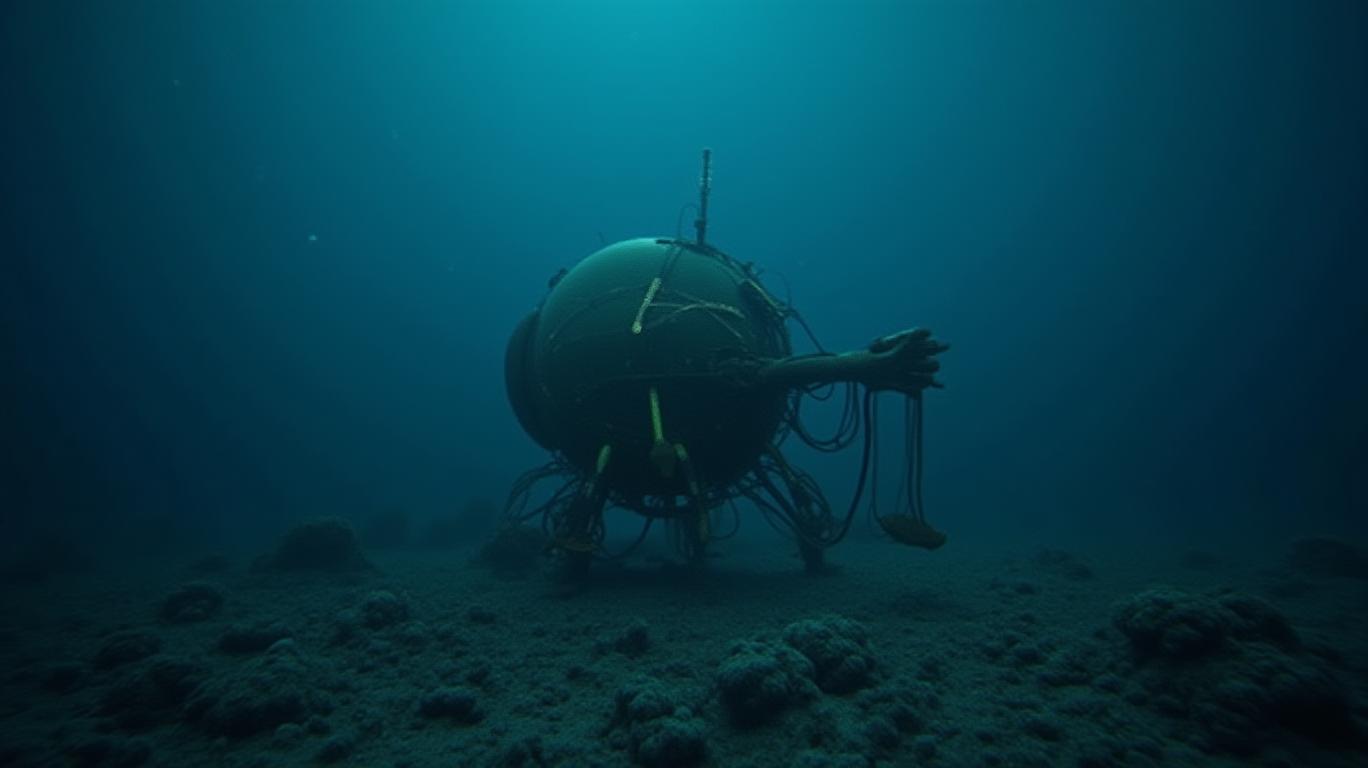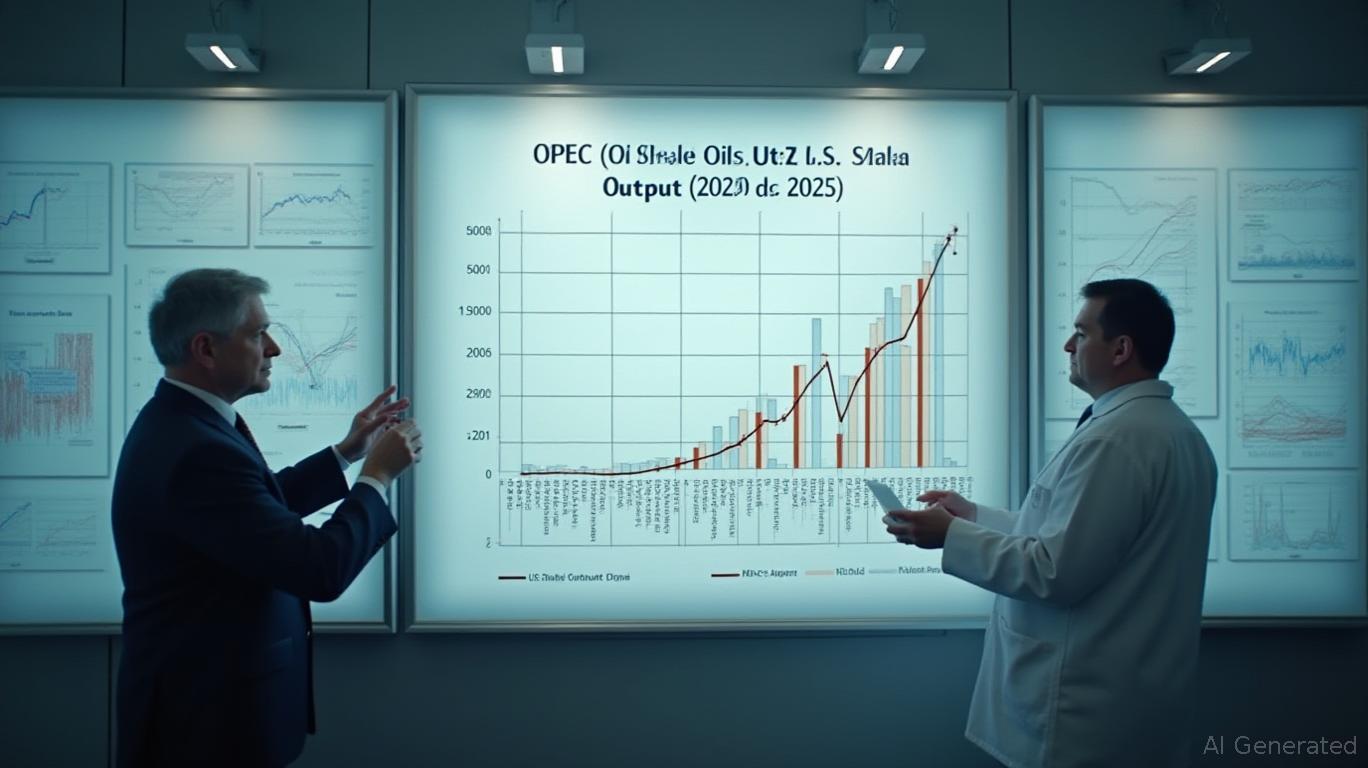The Deep-Sea Dilemma: How U.S. Mining Ambitions Are Upending Global Ocean Governance
The U.S. government’s April 2025 executive order to fast-track deep-sea mining permits has ignited a geopolitical and environmental firestorm, pitting American economic ambitions against international treaty frameworks. By leveraging the 1980 Deep Seabed Hard Mineral Resources Act (DSHMRA), President Trump has bypassed the stalled United Nations International Seabed Authority (ISA) to grant U.S. firms access to critical minerals in international waters—a move with profound investment implications.

The U.S. Policy Shift: A Race for Critical Minerals
The executive order aims to secure U.S. access to polymetallic nodules rich in cobalt, nickel, and rare earth elements—metals essential for electric vehicle batteries, renewable energy infrastructure, and defense systems. The Metals Company (TMC), a Canadian firm, has already announced plans to apply for exploration licenses under the new framework, targeting the Clarence Clipperton Zone (CCZ), a seabed region estimated to hold $15 trillion in mineral resources.
While TMC’s stock surged 40% in the days following the executive order, the company’s valuation remains speculative. Critics argue that the environmental and regulatory risks could trigger a sharp correction if the ISA or international courts challenge U.S. unilateral actions.
Environmental and Diplomatic Risks
Environmental groups warn that deep-sea mining threatens unexplored ecosystems. A 2023 study in Nature found that nodule harvesting could irreversibly disrupt microbial communities and rare species, with impacts spreading across ocean basins. The ISA’s stalled regulatory framework was already under fire for lacking enforceable safeguards, but the U.S. move has further eroded multilateral trust.
China and Russia, which hold nine exploration permits under the ISA, have condemned the U.S. policy as a “violation of international law.” Meanwhile, over 30 countries advocating for a deep-sea mining moratorium—including members of the European Union—have called the U.S. action a threat to the 2023 High Seas Biodiversity Treaty (BBNJ). With only 21 of the required 60 ratifications, the BBNJ’s future remains uncertain, leaving the U.S. isolated in its pursuit of unilateralism.
Geopolitical Stakes and Market Opportunities
The U.S. push reflects a broader strategy to counter China’s dominance in critical mineral supply chains. China currently controls 80% of global rare earth processing capacity, and its Belt and Road Initiative (BRI) has secured access to cobalt reserves in the Democratic Republic of Congo. By leveraging domestic legislation, the U.S. aims to diversify supply chains, with projections suggesting the initiative could add $300 billion to GDP over a decade and create 100,000 jobs.
However, the environmental and diplomatic risks remain immense. A failed ISA agreement or BBNJ ratification could lead to prolonged litigation, disrupting mining operations and investor confidence. Additionally, seabed extraction technologies—still in pilot phases—are unproven at scale, with estimated costs of $10 billion for a single nodule-harvesting operation.
Conclusion: A High-Reward, High-Risk Gamble
The U.S. deep-sea mining pivot presents a stark choice: prioritize short-term mineral independence or long-term ecological and diplomatic stability.
- Economic Potential: The $300 billion GDP boost and 100,000 jobs underscore the strategic allure of securing cobalt, nickel, and rare earths for clean energy and defense.
- Environmental Costs: The ISA’s delayed regulations and the BBNJ’s weak ratification suggest inadequate safeguards for marine biodiversity. A 2024 UN report warns that seabed mining could destabilize carbon sinks, exacerbating climate change.
- Geopolitical Risks: China and Russia’s objections, combined with European Union opposition, could lead to trade sanctions or international arbitration, as seen in the 2022 Arctic seabed dispute.
For investors, the sector demands a nuanced approach. Firms like TMC may see short-term gains, but their valuations hinge on navigating regulatory uncertainty and environmental liabilities. Meanwhile, companies specializing in seabed technology (e.g., ROV manufacturers) or alternative mineral recycling (e.g., battery reclaimers) could offer safer, long-term bets.
In the end, the deep-sea mining race is a microcosm of 21st-century capitalism: a high-stakes gamble where profit and planetary boundaries collide. Investors must weigh the $15 trillion prize against the risk of ecological collapse—and the cost of a fractured global order.

_b905d9341749265671656.jpg)








